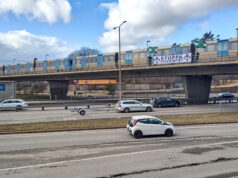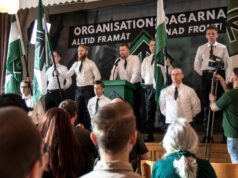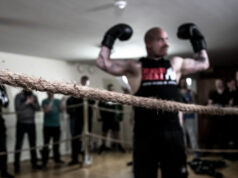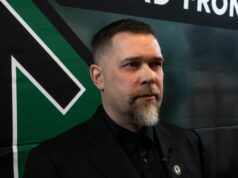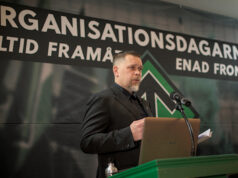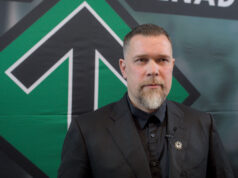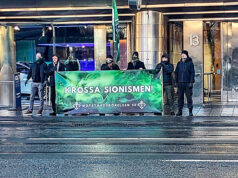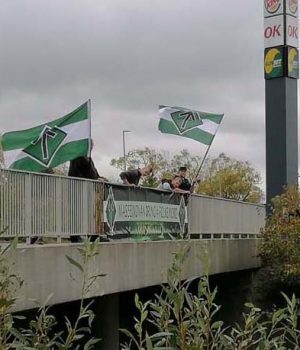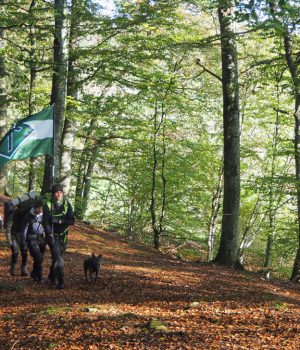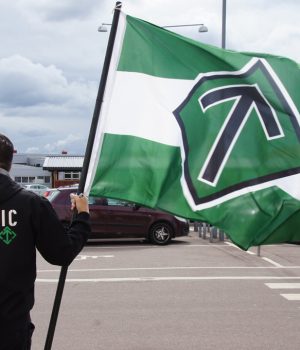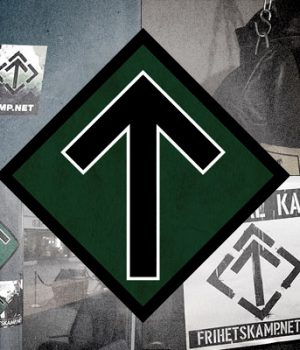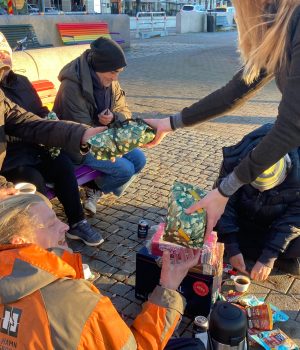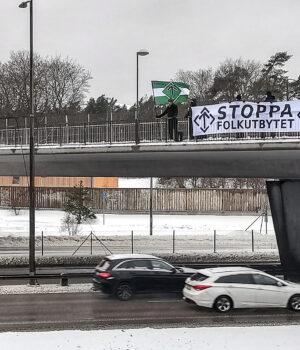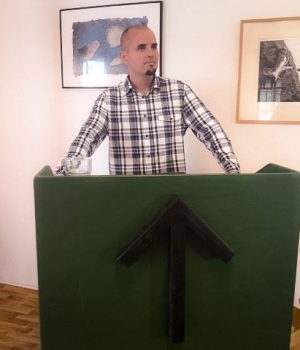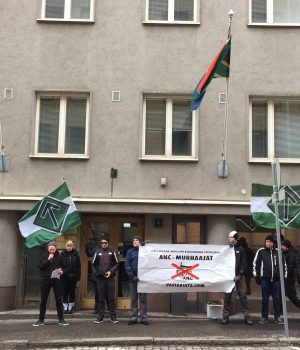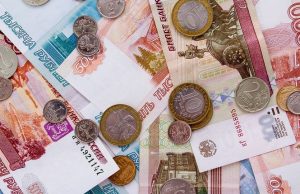RESISTANCE MOVEMENT. In the first round of the Gothenburg Trials in the district court, the prosecutor failed to ban our organisation and our symbol. Round two took place this month and is detailed below.
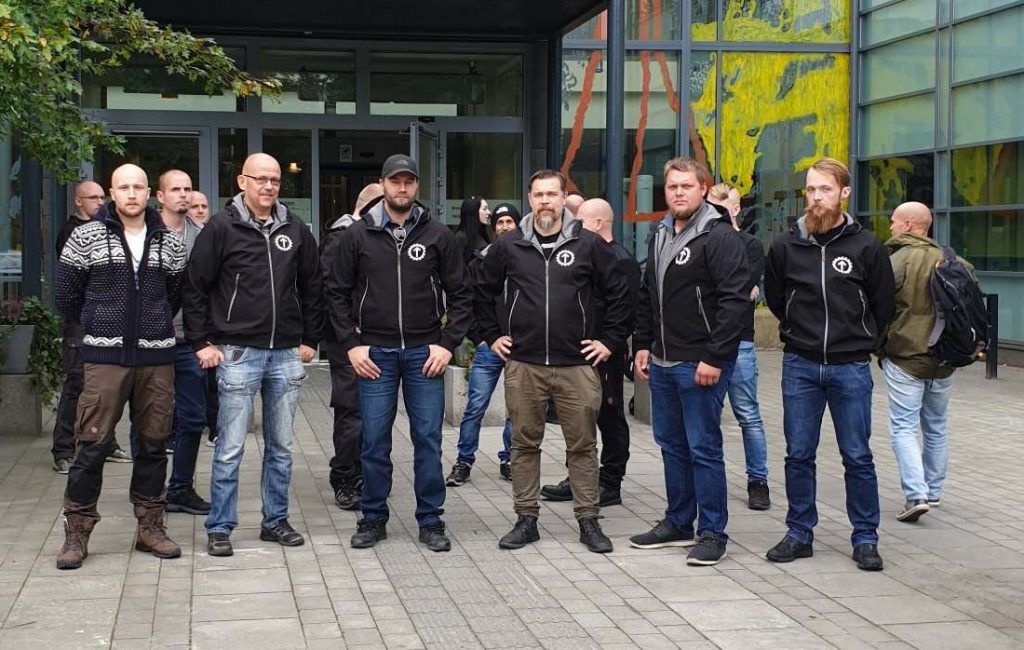
Background
The second phase of the trial in the Court of Appeal for Western Sweden was recently concluded, with the verdict currently being awaited. The trial is a result of the Resistance Movement’s high-profile demonstration held in Gothenburg in 2017. After the demonstration, a report was submitted by Civil Rights Defenders (CRD), a political lobbying organisation under the guise of an aid organisation for human rights. The CRD have also collaborated with the Jewish community. The powerful lobby organisation World Jewish Congress (WJC), which is constantly trying to ban nationalist organisations around the world, has issued authoritative calls to both the Minister of Justice Morgan Johansson and Prime Minister Stefan Löfven to do something about the Resistance Movement. Many believe that organisations like the WJC are part of the so-called deep state; that is, power-holders who are not elected by the people but who have such an influence on the elected representatives that they are really the ones in charge.
Despite this political pressure, all the defendants were acquitted of the charges relating to incitement to racial hatred (Hets mot folkgrupp, or HMF) by the district court. However, some were unfairly convicted of violent rioting – for a “riot” that lasted no more than twenty seconds and objectively cannot even be termed violent rioting. The prosecution was represented by district prosecutor Jonas Martinsson, while the assistant prosecutor Viktor Törneke appealed the district court’s ruling. They were very disappointed that the district court acquitted everyone of the charges relating to HMF. Now the accused have had to attend the Court of Appeal again for four days. So how important is this trial, and what have the consequences been? Below I’ll clarify things from a personal perspective.
The prosecutor’s presentation of the case
In his presentation of the case, the prosecutor reviewed the offences the defendants committed and why it’s important to appeal; i.e., to alter the district court’s judgment. Here the prosecutor also had the chance to present any new evidence. There was very little new evidence from the prosecutor, but some was submitted in the form of excerpts from the Organißationsbuch der NSDAP, from 1943. It contained pictures of various distinctions with Tyr rune-like symbols, which was intended to prove that the Tyr rune has clear connections to Hitler’s Germany.
Otherwise, the main evidence consisted of the much-criticised video that was also shown in the district court. The video was edited by Police Region West during the preliminary investigation, which was led by police officer Stefan Claesson. The video lacks timestamps, as well as references to the source material it’s taken from. It’s a mixture of the Resistance Movement’s own footage, the police’s body cameras, helicopter recordings and video from the hostile media (Aftonbladet et al.). The whole video is deceptively edited in order to portray the Resistance Movement in as bad a light as possible. The video, which was slammed in the district court, was presented again by the prosecutor in the court of appeal, with no improvement to its value as evidence, and naturally without excusing its obvious shortcomings. The prosecutor also stated that everyone who is accused of HMF should receive a prison sentence when the dissemination of such “hatred” is regarded as extensive.
It’s also worth noting that the abovementioned policeman Claesson now works as a bus driver, after he was fired from the police for trying to cheat the system by taking sick leave from the police while also working as a driver. His character was reflected in the video he was responsible for producing, but this didn’t seem to concern the prosecutor. In this trial, the aim was to convict us at all costs.
A lay judge is recused
Before the trial itself could begin, the Court of Appeal had to rule on an objection against one of the lay judges, Magnus Nilsson. Several of the defendants’ lawyers made the point that Nilsson was a member of the tribunal when the same court of appeal decided to seize placards from the demonstration in question. However, the prosecutor opposed the objection and said it related to a completely different offence because this “poster case” concerned libel against the media celebrity (((Willy Silberstein))). After a deliberation by the court, the dispute was approved and the judge was not allowed to participate in the trial and thus had no voice in the verdict itself. In the court of appeal, there are more judges than in the district court. The court of appeal consists of three legal judges and two lay judges, compared with one legal judge and three lay judges in the district court. When a lay judge is removed from the process, the voice of the remaining lay judge therefore has no significance.
Altered description of the offences
Day two of the trial began with Jonas Martinsson changing his description of the offences via two additions. He added another interpretation of Fredrik Vejdeland’s speech, which was given during the demonstration, as well as the opinion that the members of the Resistance Movement were defined as violent individuals and thus should receive greater punishments. The defence thought it was quite remarkable that the prosecutor chose to change the description of the offences so late in the process, after more than three years of preparation. It gave the impression of desperation.
The prosecution’s plea
The defence’s presentation of the case was very similar to the one presented in the district court, so there isn’t much to say about it. Furthermore, everything that was brought up was in relation to the pleas, so I’ll skip that part in this report.
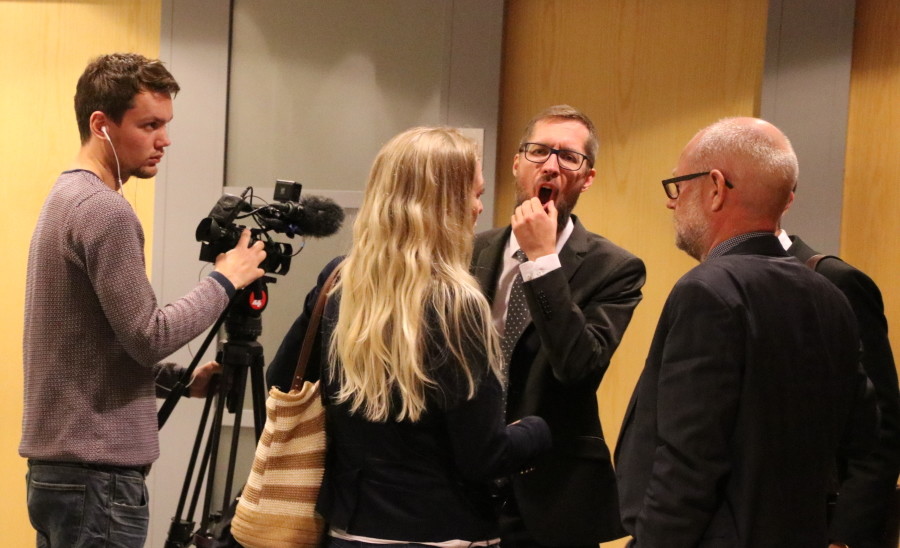
A tired and seemingly dejected prosecutor pleaded for an hour and a half, during which he claimed that the district court had misunderstood a number of important things. The prosecutor said first and foremost that the UN Convention (1971:40 The International Convention on the Elimination of All Forms of Racial Discrimination) binds Sweden not to allow racist and Nazi organisations such as the Nordic Resistance Movement. The Swedish regime has previously informed the UN that Sweden does this via its hate speech legislation. This means, as Viktor Törneke put it:
“The requirements of the Convention are fulfilled via the law on incitement against ethnic groups, which forces these racist and Nazi organisations into passivity.”
Furthermore, he added, and was eager to read, the following sentence several times:
“We believe that this means that if National Socialists and Nazis actively spread their message in the public sphere, they should be punished according to this law.”
The prosecutor emphasised that the court of appeal had to take the above interpretation of the UN Convention into account because the district court had not done so.
In addition to this new gambit, prosecutor Jonas Martinsson claimed that everyone who was in the vicinity of the demonstration agreed with its message. This means that if a political dissident came just to listen to Vejdeland’s speech, he supposedly agreed with the Resistance Movement on everything. And if someone did not promptly leave the area, they were part of the collective “crime”, according to the prosecutor.
It was also claimed that the Resistance Movement has a system of acting on the border of legality; in other words, that attempting to adhere to the law is viewed negatively within the organisation.
The prosecution believed they had proved that the Tyr rune was associated with Hitler’s Germany to almost the same extent as the swastika, and reasserted a portion of the original description of the offence; i.e., that the Resistance Movement’s actions entail a clear association with National Socialist movements of the 1930s and 1940s and thus are also connected to ideas of racial superiority and racial hatred, as well as a general disparagement of ethnic groups other than the Nordic.
Related: Gothenburg Trial Verdict: Victory!
The defence’s pleas
The most impactful pleas were made by Pär Sjögren’s lawyer, Carl-Oscar Morgården, and my lawyer, Daniel Rosero. They both had PowerPoint presentations that fundamentally dismantled all of the prosecutor’s arguments. In particular, several lawyers made light of the idea that the demonstration resembled demonstrations in Hitler’s Germany. Jimmy Andersson’s lawyer Henrik Johansson exhibited approximately ten minutes of Leni Riefenstahl’s Triumph of the Will to emphasise the difference. This was in response to the then police chief for Greater Gothenburg Erik Nord, who stated in an article in Dagens Nyheter that it was not incitement to racial hatred when we demonstrated, as long as it did not resemble NSDAP events in Nuremberg. This statement was made after a demonstration that took place before the high-profile Gothenburg demonstration.
One interesting thing was that the lawyers stuck together more than usual when making their pleas. We had put quite a lot of energy into getting the lawyers to think collectively and not just about their own client. I believe this benefited us in the district court, where most of us were acquitted.
We didn’t fall into the trap
Something that is completely clear to me now, but which I always suspected, is that the demonstration in Gothenburg was never going to be allowed to take place. The police, led by Erik Nord and Hans-Olof Sandén (a police lawyer who is very interested in the application of the racial hatred law), had already planned to test the HMF law in this manner.
I assert that the plan was as follows: Let us start the demonstration and walk the route’s reduced 800-metre distance. Finish right next to the temporary detention facility, where a car park had been altered to hold three hundred detainees. Outside this car park, everyone who had party jackets, signs, shields or flags would be arrested. With everyone detained, it would be possible to conduct extensive house searches and thus construct a more effective prosecution. This would fit with the behaviour of a police organisation that always works from an intelligence perspective regarding the Resistance Movement, searching for things to build their investigation on rather than actually looking for crime. All of this failed, as we did not fall into the trap.
Aftonbladet interviewed a person with insight into the police command; according to him, the police’s tactic was to intervene if someone carried a flag or shield in the march, with a lot of force if necessary. Furthermore, we heard from lawyers that the police booked all available lawyers in Western Sweden to be prepared to work right after the demonstration. I can also reveal that I personally received a tip just before the demonstration from a police officer (not a dialogue police officer) that the police had dishonest plans regarding the entire operation. Everything was prepared. Even the media drive after the demonstration, where the police were hailed by the system media and politicians. Both Stefan Löfven and Morgan Johansson praised the police efforts and threw around gross misinformation about the Resistance Movement. It was also said that the event was a fiasco for the Resistance Movement and that it generated internal criticism. The latter was a cleverly planned psyop to mislead our own members.
Promotions for the political police
The police involved in the operation were quickly promoted. The chief of Police Region West, Klas Friberg, became head of SÄPO. The Chief of Police of Greater Gothenburg, Erik Nord, was promoted to head of Police Region West, and finally the Chief of Police in Kungälv, Teodor Smedius, became head of Greater Gothenburg Police. The Minister for Justice, Morgan Johansson, referred to our Gothenburg demonstration when he appointed Klas Friberg to his new post.
This sent a signal to all police officers with career ambitions as to how they should behave in order to get promoted. One can only wish that the police force were shaped by people of good character with a passion for justice, not politically correct, unscrupulous individuals who let society decay and take bribes in the form of higher pay and celebrity status to look the other way.



